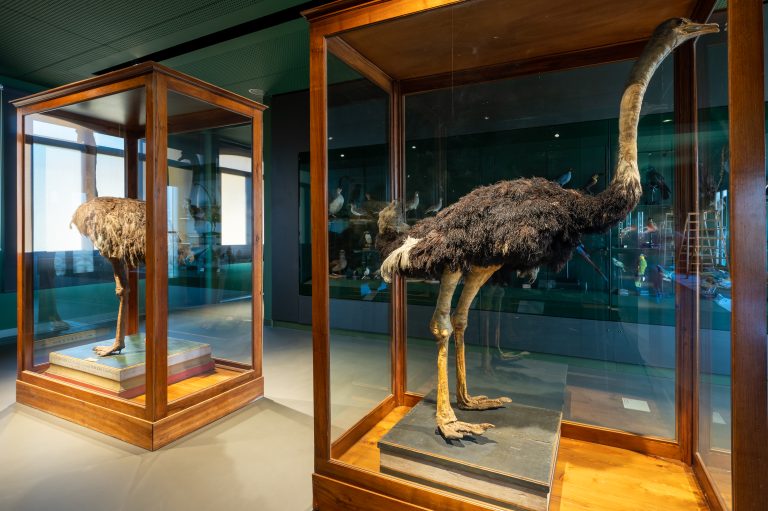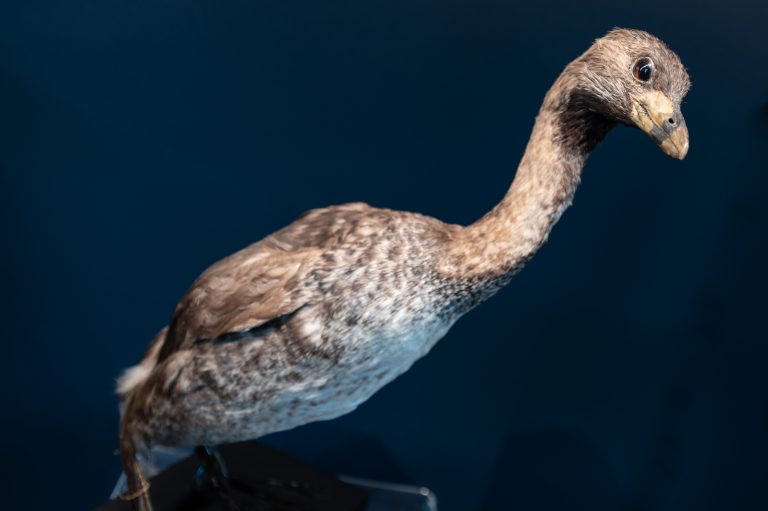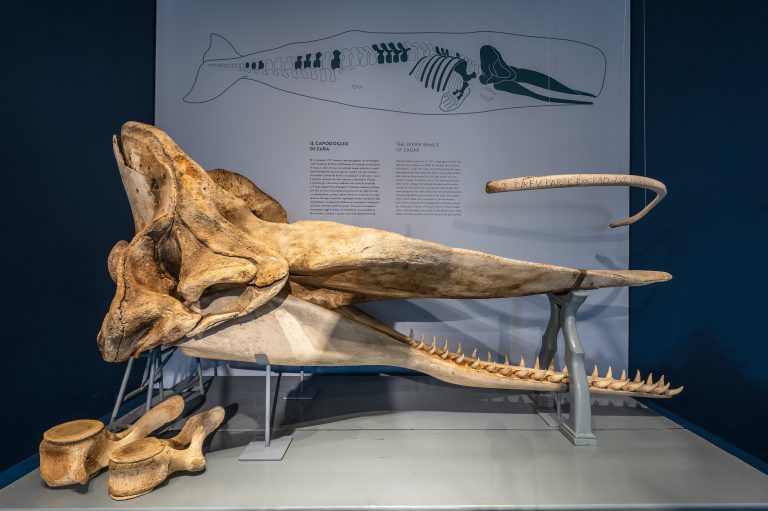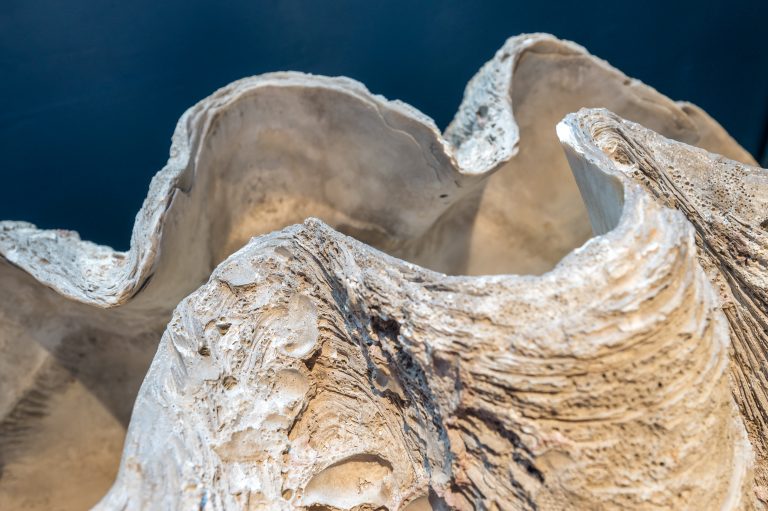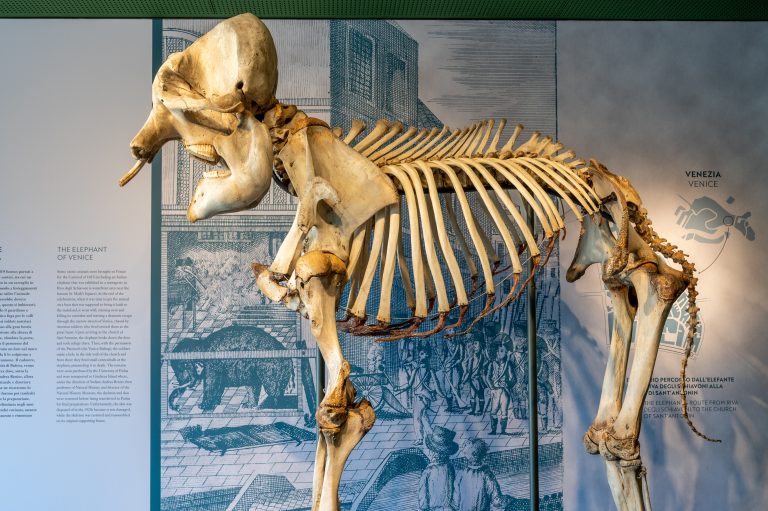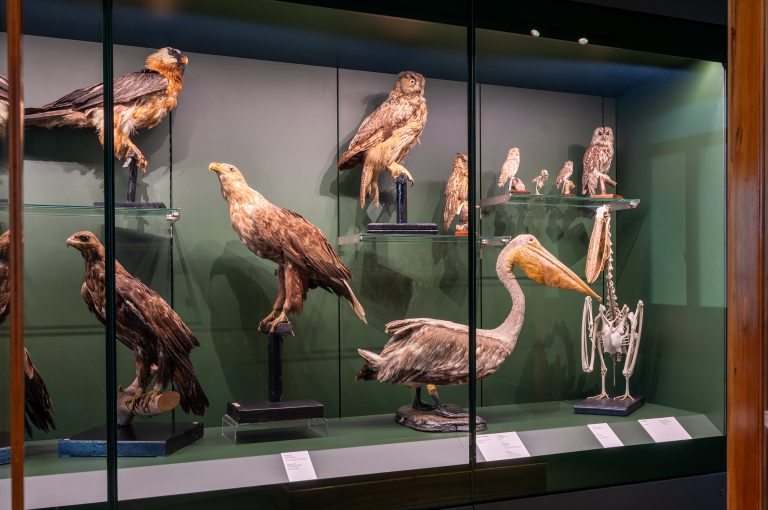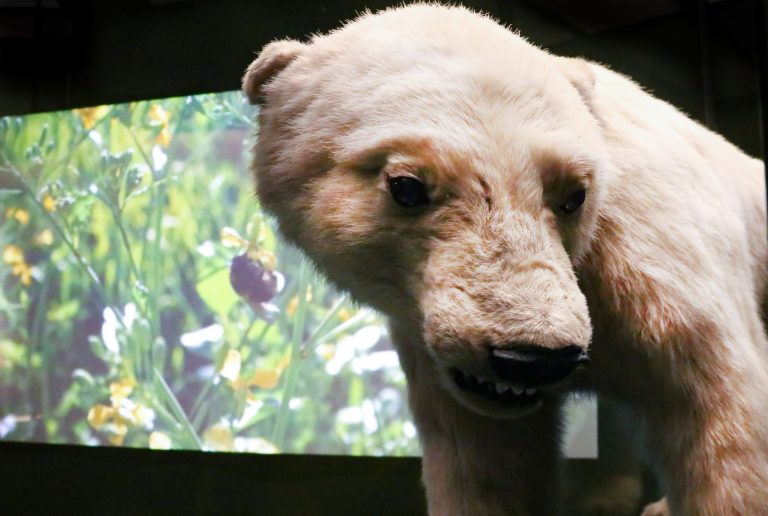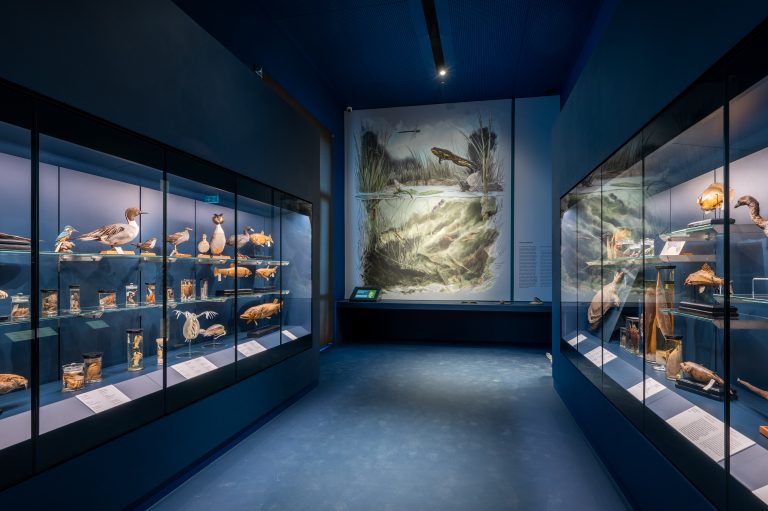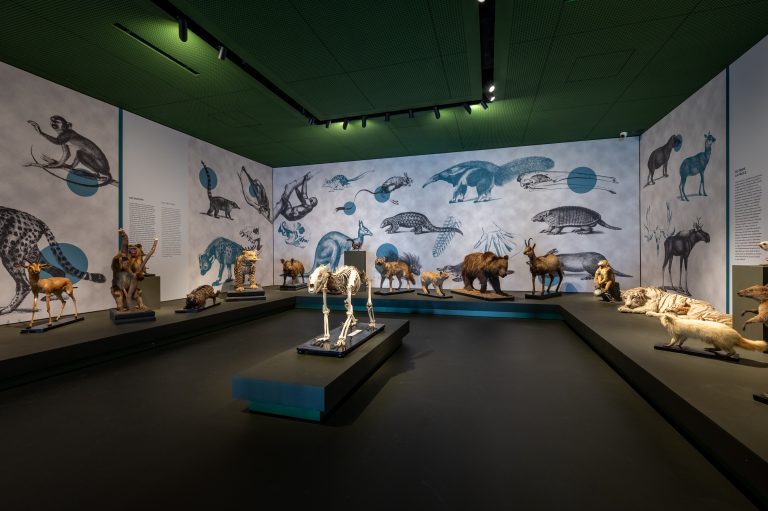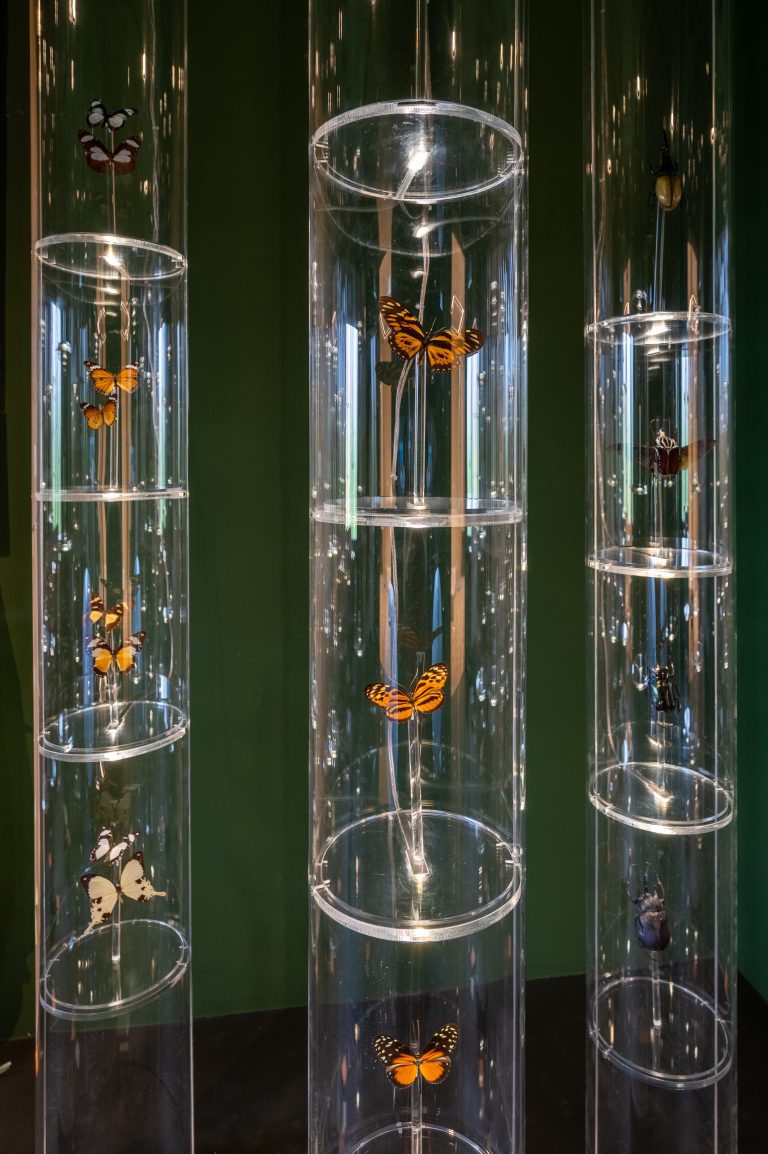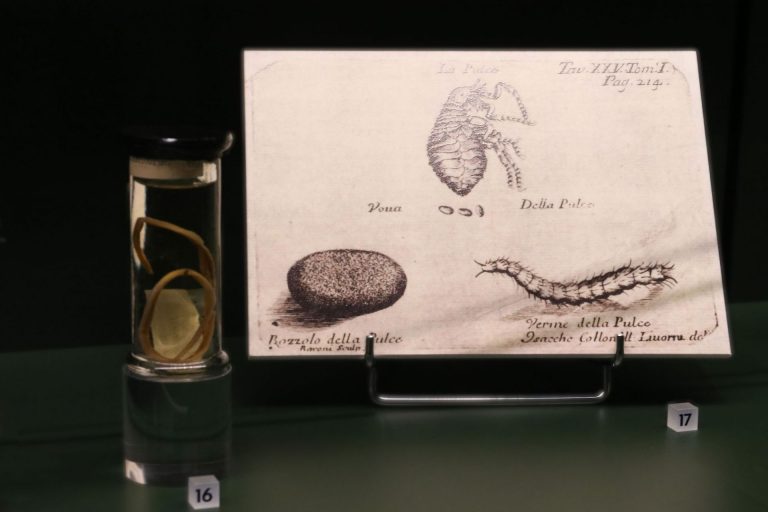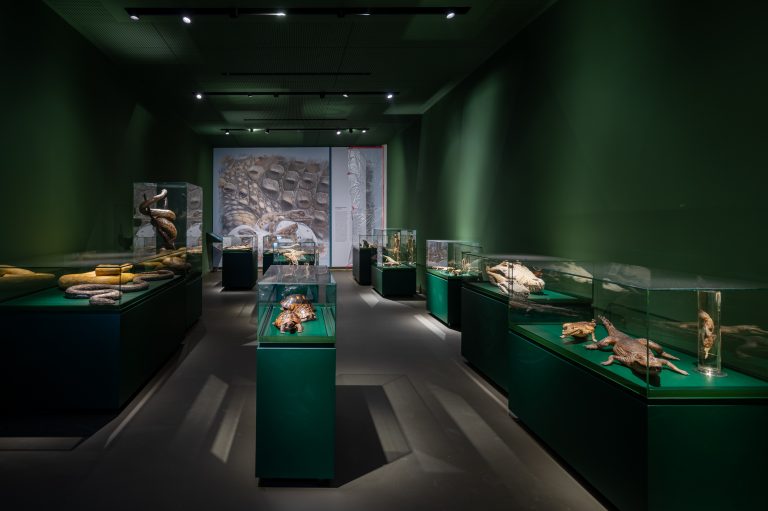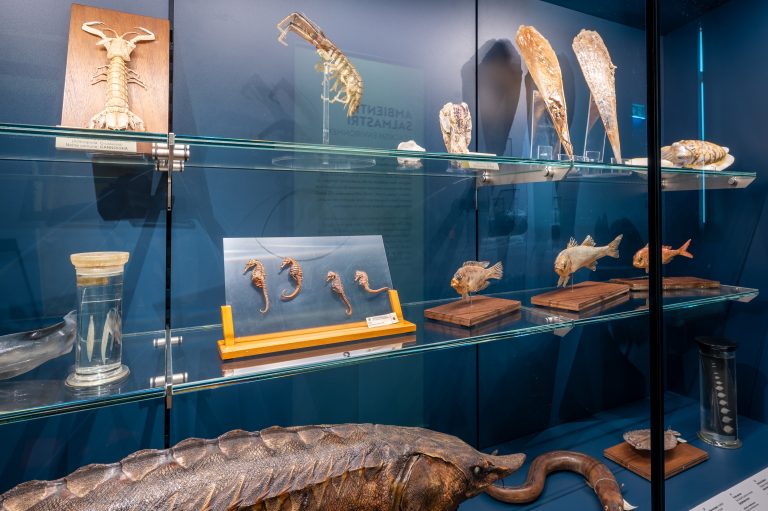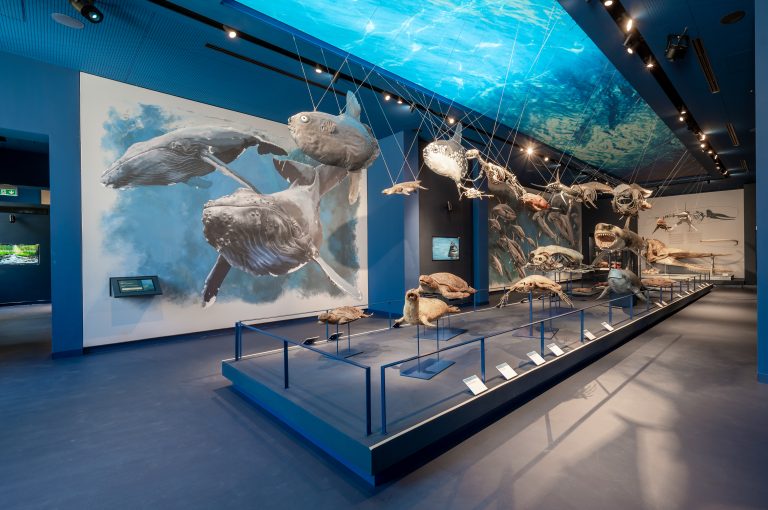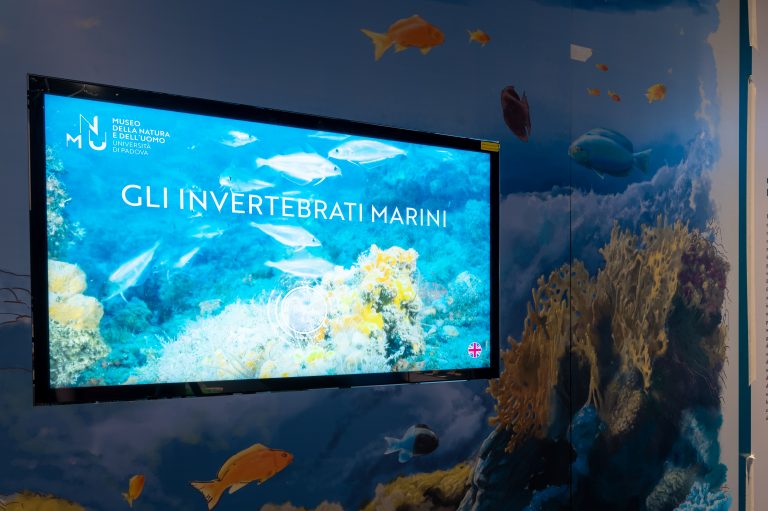The living beings that inhabit the Earth are all connected to one another, as we know from the Tree of biodiversity, a great multimedia installation that opens the journey into the world of animals.
Zoological displays then allow us to perceive the astonishing biodiversity that surrounds us, an invaluable treasure that we have, alas, endangered.
This journey is divided into two worlds: water and land.
Visitors are invited to delve into the colourful and diverse world of marine invertebrates, including sponges, corals, crustaceans and molluscs such as the incredible giant tridacna clam, and then to dive into the deep blue of the Great Hall of Marine Vertebrates: the visual and sound installation will make you feel like you are swimming with the great inhabitants of the oceans. Among the skeletons and taxidermies of dolphins, sharks, turtles and seals stands out the immense skeleton of a sperm whale caught in Zadar in 1767. The adaptations and particularities that millions of years of evolution have produced in these animals are highlighted, also through multimedia exhibits.
The first part of the itinerary ends with an overview of lagoon and fresh water environments, which are among the most delicate and those suffering the greatest harm as a result of human activities: here you will find a specimen of an Atitlán grebe, a species now extinct.
Visitors then emerge onto the mainland on the top floor, where they are welcomed by a forest of bright, transparent cylinders that tell them about the biodiversity of terrestrial invertebrates, and insects in particular: an incredible variety of forms, adaptations and specialisations of all kinds, such as camouflage or parasitism, which sometimes were not enough for these animals to survive the coexistence with Homo sapiens.
The last part of the journey takes us among the terrestrial vertebrates: the Great Hall of Mammals houses skeletons and taxidermies of hippos, felines, wolves, anteaters, bears and many other animals that seem to walk alongside the visitors. The skeleton of an Indian elephant which died in Venice during the 1819 Carnival is also on display here.
Reptiles and birds follow, with two precious ostriches from the historical collection.
The journey among living beings ends with a reflection and a mission: climate change, pollution and overexploitation of resources are currently causing the extinction of many species, at a rate comparable to that of mass extinction. The exhibition closes with a major projection that tells us why it is essential to safeguard biodiversity, why it is endangered and what can be done to put a stop to this problem.


